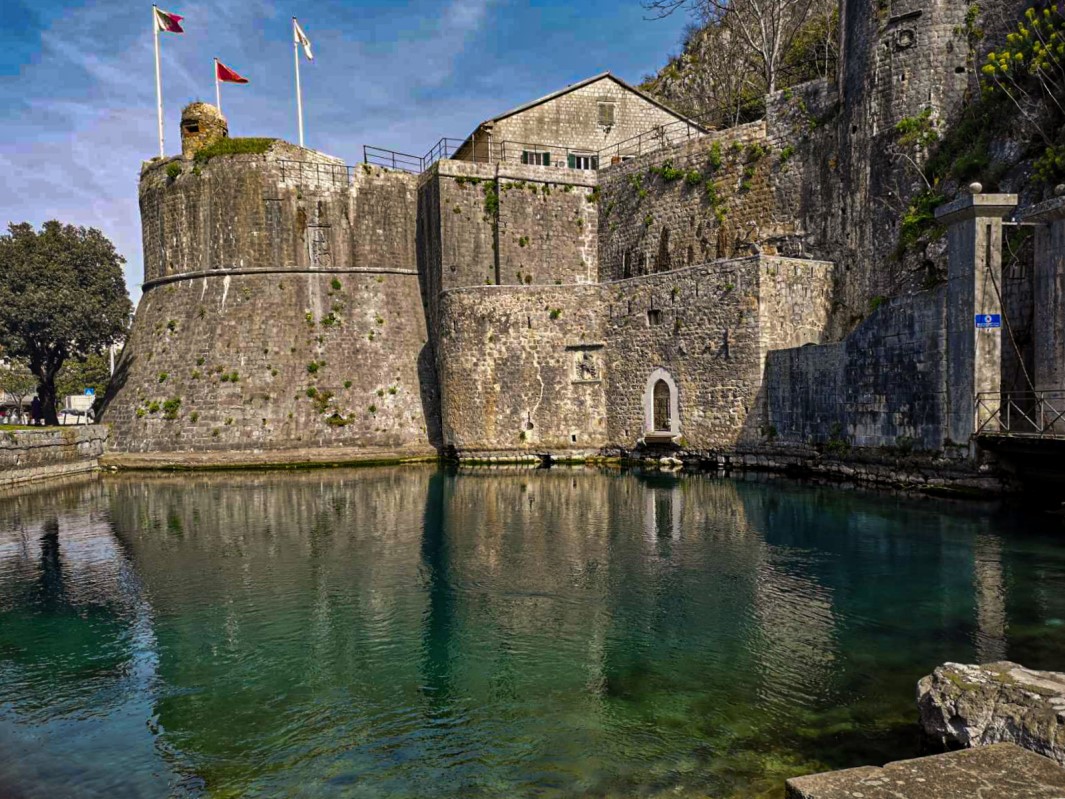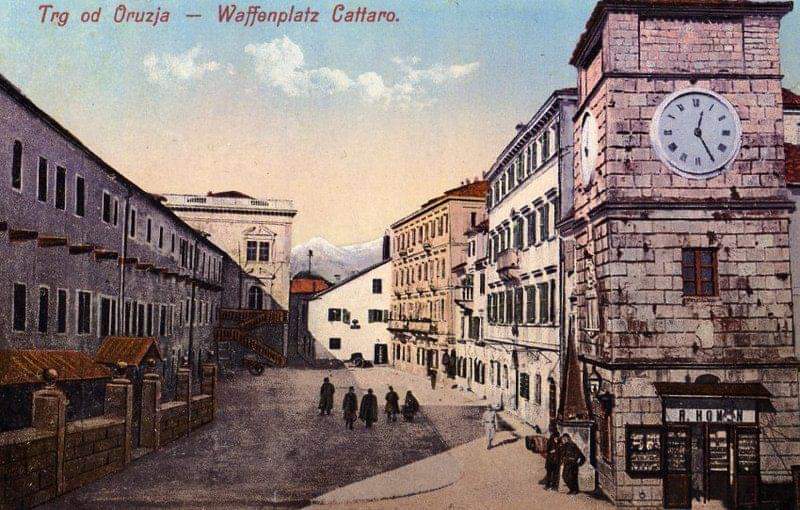Karampana Fountain
The springs of Škurda and Gurdić, on two opposite parts of the town, used to supply the citizens of Kotor with water, as well as the wells in the yards or entrances of the houses, conserved to the present day.
In these shallow wells, water comes from numerous underground springs and currents existing at the contact of the steep rock of St. John hill and the flat alluvial space of the Old town. But as the town was without a sewage system till the 19th century, when only a rainfall collection system was built, in the houses there were septic tanks so that very often there were epidemics, terrible pestilences and cholera which would take the lives of helpless inhabitants of Kotor.
In its actual shape, the fountain dates back to the Baroque of the end of the 17th or the beginning of the 18th century (see History of Kotor), considering the extraordinarily fine elaboration of its fence of wrought iron, a masterpiece of blacksmiths of Kotor, members of the Blacksmiths’ guild mentioned in the 14th century. The fountain functioned as a simple pump with two pistons, which by pulling the handle drew water from an underground well. But when in 1917 the Austrian provided the water from one spring in Grbalj by means of newly waterworks and iron pipes, the function of the pump Karampana stopped till 1958, when it was connected to the new water supply system from an underground lake near the river Škurda. But the tradition of the gathering of citizens, especially women – the laundresses and water carriers – around this fountain for the exchange of fresh news, slanders and gossip, has been prolonged until today, but in somewhat changed form, a periodical magazine for humor and satire called “Karampana”. This magazine has been published continuously from the year 1926, except for the years of the war, once or twice in the year, during the Carnival, and it has really expertly teased or pitilessly stricken and whipped public or private vices and misdeeds of the citizens of Kotor.
There are many stories about the name Karampana. According to one, this name indicates an old-fashioned object, exhausted machinery, one waste installation – in general: something that moans and creaks but gives feeble results. Another explanation can be seen in the Dictionary of the Venetian dialect: since the 14th century, this name had been used to indicate a chain of brothels organised in one obscure quarter of the Town of lagoons, in the palace of the died-out family Rampani (in the Venetian dialect: Ca’Rampani). Therefore this term in Venice indicates the brothel in general. In the rich funds of Kotor Archives there is still no confirmation of the existence of a department of that chain of brothels, which might have given the name to this pump. In any case, the citizens of Kotor are proud of this old fountain and they sing on many occasions:
Karampana, famous is thy name,
and we may be proud of the same!
(From the book Hundred Jewels of Kotor by Jovan. J. Martinović)






